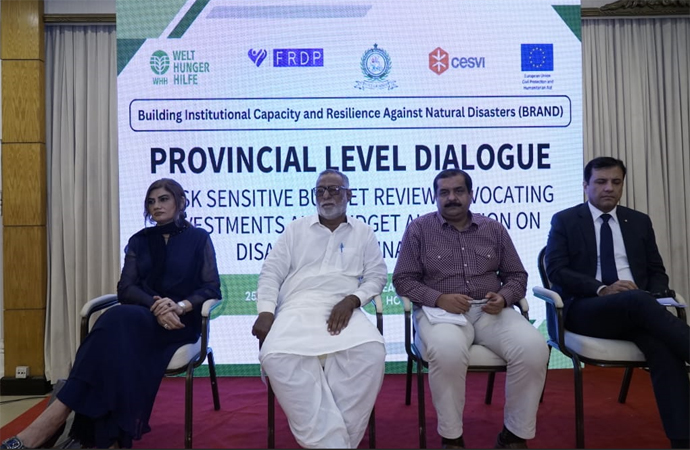 “The increasing frequency and intensity of disasters due to climate change demand proactive measures in disaster preparedness, risk reduction, and climate adaptation,” stated Ms. Fozia Aziz, Executive Director of FRDP.
“The increasing frequency and intensity of disasters due to climate change demand proactive measures in disaster preparedness, risk reduction, and climate adaptation,” stated Ms. Fozia Aziz, Executive Director of FRDP.
Highlighting the need for provincial consultation on Disaster Risk Financing (DRF), she stressed the importance of enhancing institutional resilience and financial preparedness. In her opening remarks, The Executive Director FRDP called for risk-sensitive budget reviews and dedicated funding allocations to strengthen disaster preparedness. She emphasized that collaboration between the government, financial institutions, and development partners is essential to ensuring disaster risk reduction remains a priority in policy and budgeting.
The event, organized under the Building Institutional Capacity and Resilience Against Natural Disasters (BRAND) project a joint initiative by Welthungerhilfe (WHH), Cesvi, and FRDP brought together government officials, financial experts, policymakers, and National and international humanitarian organizations to discuss strategies for strengthening disaster risk management in Sindh. Participants explored global and local DRF frameworks, financial instruments, and the challenges in implementing effective risk financing mechanisms.
Key speakers, including Dr. Tarique Khan (DG Plant Protection), Muhammad Raheem Marri (Head of Humanitarian Response, HANDS), Dr. Naeem Siddiqui (Additional Director, Livestock Department), Dr. Farhana Meer (Program Director, LHW Program, Health Department GoS), Mr. Kapil Dev (UN WOMEN), Professor Amanullah Mahar (Director, Centre for Environmental Sciences, University of Sindh), and Mr. Mir Iftikhar Talpur (WHH), emphasized the crucial role of the government, the need for strengthened coordination, resource pooling, and proactive measures to mitigate climate risks.
The BRAND project aims to strengthen institutional capacities in disaster risk management by improving coordination among DRR units, refining disaster response systems, and supporting the implementation of Provincial and District Disaster Management Plans. Additionally, it focuses on optimizing early warning mechanisms and response strategies to mitigate climate-induced disasters.